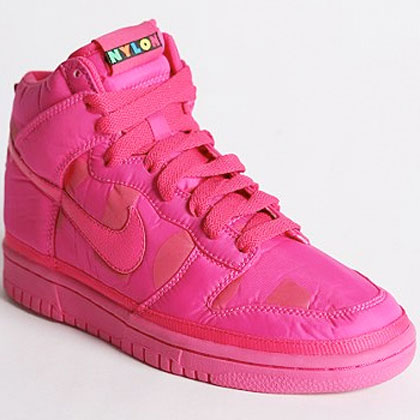There are all sorts of ways to be curious about this image/object from the perspective of power, privilege and inequality. Here are just a few questions that feminists (and you, using feminist concepts and ideas can) ask:
Labor: Who makes this sneaker? Where is it made? How is it made? How much does it cost to make? How much is it sold for? How much of the profit is given to the worker that made the shoe and how much is given to the company who produced the shoe? Does the making and selling of this sneaker lead to an unequal distribution of labor and profit–between worker/producer or between communities/regions/nations? If so, how? At whose expense is this sneaker made? For whose benefit?
Marketing: How is this sneaker, and other sneakers for women, marketed? How do advertisers encourage us to buy their products? Do their methods work to reinforce harmful stereotypes about women? If so, how and which ones? Do sneaker advertisements ever objectify women? What about these two commercials (see right below)—what are these advertisers suggesting about women? How are the attempting to get women to buy their shoes?
The Consumer/Consumption: Who has access to these sneakers? Who can buy them and who can’t? Why and how are the products that we buy important to our various identities? What do these sneakers say about us when we wear them/buy them? What kind of status and/or privilege do they afford us? What happens to this sneaker when we are done wearing it? Where do discarded sneakers go? Here?
The Worker: Who makes this sneaker? Who manages the workers who make this sneaker? Why are so many of the workers who make these sneakers women from Indonesia, Vietnam and China? What are their working conditions? Who are these women and what are their stories? Why is it important to think about and listen to their stories?
The bodies that wear them: What kinds of bodies should/do wear this sneaker? Who shouldn’t, or who can’t, wear this sneaker? What are you expected to do when you wear this sneaker–are they for engaging in sports, like running or basketball or something else? Check out these images–what clues do we get about who is/should be/most likely will wear them? What types of bodies (in terms of race, size, ability) are included/excluded from these images? Why? Is it acceptable for older women to wear these sneakers? Why or why not? What about men? Does the color of the sneaker (pink) suggest who it is for?
How might these questions, and the strenuous process of asking and engaging with them, enable us to think about how power and privilege work? For more on this last question, click here to proceed to the final phase of this activity.

